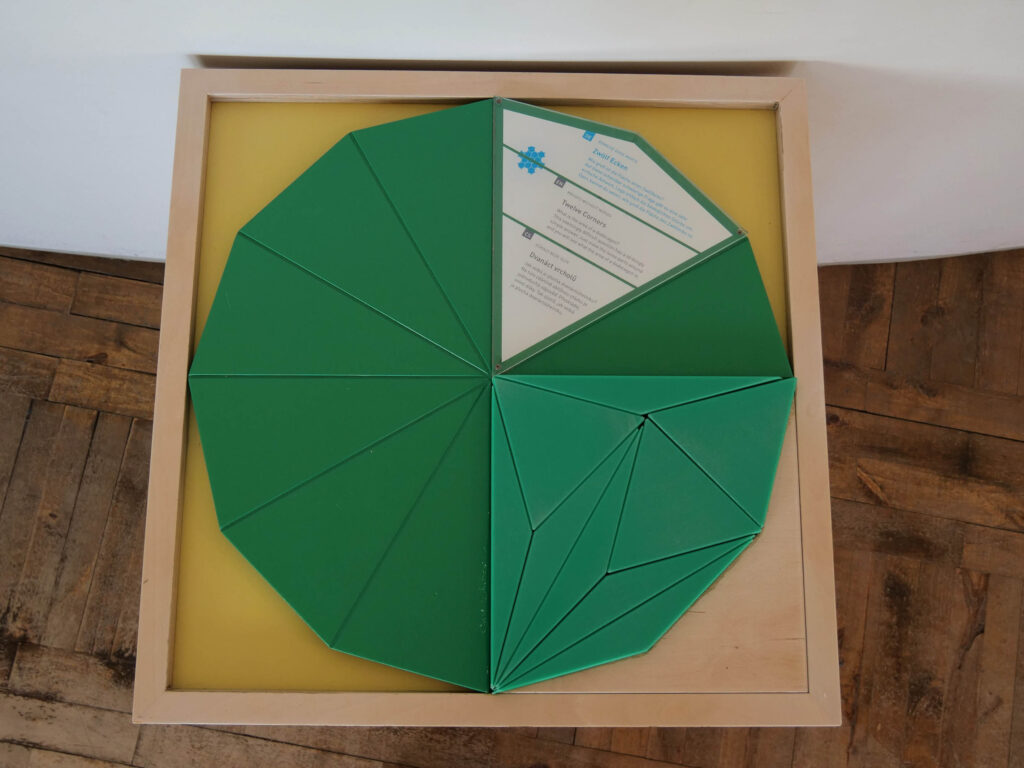Proof without words: Twelve corners
Here we are again dealing with a proof without words and the circular number ![]() . What is the area of a regular dodecagon that has a circumcircle of radius
. What is the area of a regular dodecagon that has a circumcircle of radius ![]() ? The puzzle you have in front of you provides an answer in an amazingly simple way: Put the pieces together so that they form three squares of equal size with an edge length of one. Since equality of content follows from equality of decomposition, the area of the given dodecagon must be exactly
? The puzzle you have in front of you provides an answer in an amazingly simple way: Put the pieces together so that they form three squares of equal size with an edge length of one. Since equality of content follows from equality of decomposition, the area of the given dodecagon must be exactly ![]() . This is also close to the circle number
. This is also close to the circle number ![]() , which is the area of the unit circle (and
, which is the area of the unit circle (and ![]() ).
).


